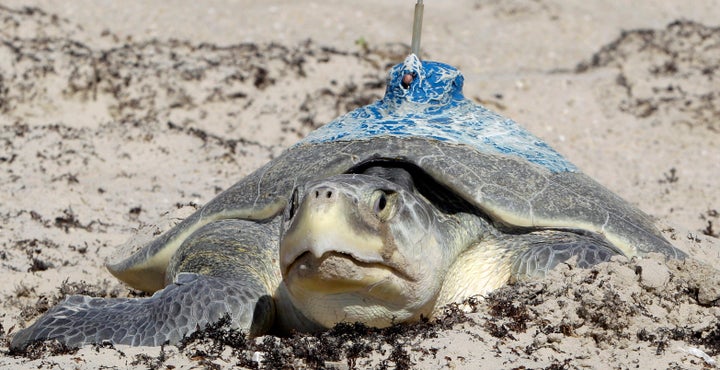
Imagine that you're going for a swim in the ocean, when suddenly you're scooped up by an enormous net that drags you under. Scrambling to find an escape, you realize you're stuck, and you won't be able to come up for air. There's no way out.
This is the reality for many sea turtles in the Gulf of Mexico, who have been turning up dead in appalling numbers. Last year more than 600 sea turtles were found either dead or injured in the Gulf, which is more than six times the average over the last two decades. And already in 2011, more than 560 have washed up. And since only a miniscule portion of dead or injured sea turtles wash up on shore, the real number of turtles dying is enormous.
I was shocked to learn that while sea turtles have been undoubtedly affected by the massive oil spill last year, there's another culprit: Gulf of Mexico shrimp trawls. Not all trawls in the Gulf shrimp fishery are required to use Turtle Excluder Devices (TEDs), which are escape hatches that prevent sea turtles from drowning in trawl nets. Without TEDs, shrimp trawls are essentially sea turtle death traps.
Like you and me, sea turtles are air-breathers; when they get caught in fishing nets they may be unable to come up for air. Each of the six sea turtle species found in U.S. waters is listed as either endangered or threatened under the Endangered Species Act, which means that they may go extinct in the foreseeable future.
But did you know that under the Endangered Species Act, the government authorizes fisheries to injure or kill a specific number of sea turtles? That's right, and more than 98 percent of all sea turtle interactions authorized to U.S. fisheries are given to the shrimp fishery.
The government assumed that TEDs are 97 percent effective and authorized the shrimp fishery to kill 1,451 loggerhead sea turtles. Oceana recently released evidence that so many shrimp trawls are not using the escape hatches properly that the number of loggerheads killed is likely thousands higher.
Loggerhead nesting populations in the U.S. are struggling -- and these shrimp trawls aren't helping.
The solution, as Oceana and other environmental organizations have pointed out, is simple: the government must require TEDs in all trawls, especially shrimp trawls, and enforce these regulations -- or else shut down the Gulf shrimp fishery.
Sea turtles have been swimming in the oceans for millions of years, and now these ancient mariners are being unnecessarily pushed toward extinction. It's time to give sea turtles a breather.
Susan Rockefeller is on the board of directors of Oceana, the international ocean conservation organization.